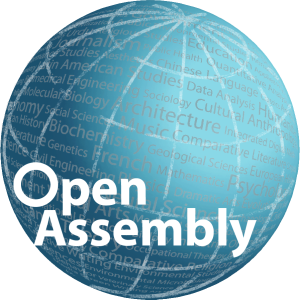As John Rindele pointed out in his presentation at Open Education 11, “a key factor in OER uptake is the ability of resources to be easily accessed, combined with other course materials, and presented in an appropriate context for learning.” For many instructors (for better or worse), the LMS is currently the hub of their course. And yet using OER within an LMS presents some interesting paradoxes and dilemmas given that LMS are still operating within the “closed course” paradigm. Of greatest significance is the near-impossibility of realizing OER’s full potential to enable open pedagogies.
Most online instruction takes places within a learning management system (LMS) such as Blackboard, Moodle, Desire2Learn, Sakai and others. Yet little research has examined how learning management systems structure participants’ experiences and replicate or diverge from traditional pedagogy. The ways in which course materials are presented and accessed — and who gets to present what and when — form a key component in the online classroom.
The technology used to deliver an online class influences how students and instructors interact with one another. More than previous technologies, online learning systems have the potential to enhance the collaborative performative nature of teaching, and at the same time, the potential to turn teaching into a static exercise. Just as the architectural design of a classroom qualifies student–instructor and student–student interaction, online course delivery platforms such as LMS provide the framework for class communication. And like the room seating arrangement, degree of access to (natural) daylight and other aspects of the bricks-and-mortar classroom context, the LMS structure largely goes unnoticed and unquestioned. Yet how a classroom is organized, whether in person or online, will influence how communicators interact within that classroom.
In her 2002 critique of online education, Megan Boler argued:
“The brave new world of digital education promises greater access, increased democratic participation, and the transcendence of discrimination through pure minds. We must interrogate the actuality of these hypes: who has access, is participation online transformative, and is transcendence of difference a goal of progressive pedagogies?”
To extend the reach of OER we feel it is critical for resources to be made easily accessible from within the LMS, until we have a better way. This need is greater than providing a simple link.


Leave a comment